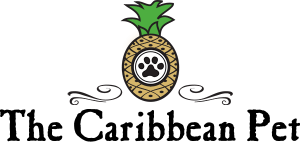- Language: English
- Currency: Trinidad and Tobago dollar
- Temperature: Average 87°F year-round
- Square Miles: 1,980 Approx.
- Population: 1.3 million
ABOUT. Trinidad and Tobago is a nation consisting primarily of two Caribbean islands just off the northeastern coast of Venezuela. The country is the most industrialized and one of the most prosperous in the Caribbean. Overall, tourism is not a major industry and even though the island of Tobago has more tourism, the islands remain examples of unspoiled beauty.
The Arawak and Carib Indians prospered here. The Amerindians first called this “Ieri”, land of the Humming Bird, but when Columbus discovered it, he renamed it for the Holy Trinity. Tobago is named for the tobacco cultivated by the original Carib population. Eventually, European powers expressed interest in the island’s strategic location, harbor, and fertile soil, and many battles for the land took place. In the 17th century, the English, French, and Dutch fought to control the island and it changed hands more than 30 times. Eventually, the British would capture Trinidad in 1797 and negotiate a friendly treaty of rule with Spain. African slaves were brought in to work on sugar plantations and in 1802, the island became a British colony. After slavery was abolished by Britain, landowners brought in workers from India, China and the Middle East. Tobago existed separately from Trinidad for centuries. In 1889, Britain joined the smaller Tobago to Trinidad as an administrative ward. The islands finally achieved independence from England in 1962 and became the Republic of Trinidad and Tobago in 1976.
Trinidad is a blend of descendants of settlers from Europe, Africa, Asia, South America and the Middle East. Many descendants of Caribs and Arawaks still remain in Trindad and Tobago. The blend of the different ethnic groups create a rich inheritance of dance, music, art, cuisine and festivals. The country’s cosmopolitan society is one of peace and harmony amongst all the various peoples and cultures. In Arima the Carib community celebrate their feast every August. Many of the festivals celebrated in Trinidad, like the Muslim festivals of Hosay and Eid-ul-Fitr and the Hindu festival of Divali are religious observances. Other festivals, like Emancipation Day, Shouter Baptist Liberation Day and Arrival Day, highlight the traditions, customs and contributions specific ethnic groups have made to the islands’ development. Carnival, is a two day display of drama and color to showcase the artistic and cultural roots of the island.
The two islands are quite different from one another. Trinidad is the larger of the two, and is the location of most of the country’s cities and activity. It is also the center of the country’s petroleum and natural gas production. Tobago is known for tourism, which is its main industry and is a popular tourist destination. Tobago’s early economy was agriculture, but faced destruction from hurricanes in 1847 and 1963. Throughout the sixties and seventies, the country prospered from oil and natural gas which made it the wealthiest nation in the Caribbean. However, in the late eighties, oil prices dropped significantly, causing a major economic downturn. Thousands of Trinidadians left the country at this time, in search of better opportunities elsewhere. Throughout the 90’s and 2000’s the country continues to recover and thrive.
Both islands share natural beauty and a pleasant maritime tropical climate influenced by the northeast trade winds. Trinidad has three distinct mountain ranges. The Northern Range, an outlier of the Andes Mountains of Venezuela, consists of rugged hills that parallel the coast which rises into a range with two peaks. The highest, El Cerro del Aripo, is 940 meters (3,084 ft) high; the other, El Tucuche, reaches 936 meters. The Central Range extends diagonally across the island and is a low-lying range. The Caroni Plain, extends southward, separating the Northern Range and Central Range. The Southern Range has an elevation of 305 meters (1,001 ft). The Ortoire River, and Caroni River can be found on Trinidad along with many streams. Although Tobago is volcanic in origin, there are no active volcanoes.Tobago is mountainous and dominated by the Main Ridge, which is 29 kilometers long with elevations up to 640 meters. There are deep, fertile valleys running north and south of the Main Ridge. Coral can be found at the southwestern tip of the island.

